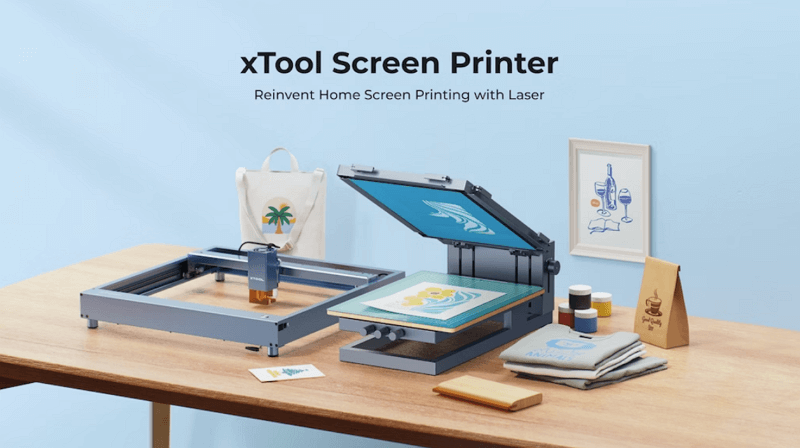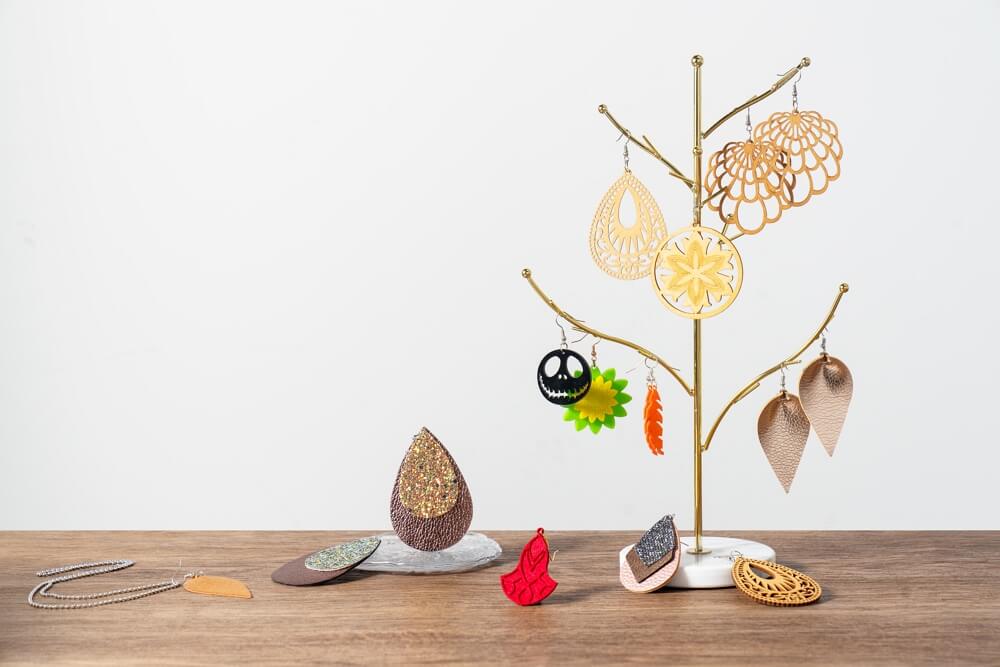How to Make Money as an Artist In 2025
Money-making is essential to thrive in today's fast-paced world. Fields in science and technology are often seen as the gateways to substantial financial prospects. However, when it comes to creative pursuits such as art and craft, the conversation around financial success tends to take a skeptical turn.
But this perception doesn’t hold up, especially not today. Artists have multiple opportunities to earn significant income in the digital landscape.
This article is aimed at artists, particularly those aspiring to enter this vibrant field. We have outlined 10 ways through which you can monetize your artistic talents and secure financial stability.
10 Ways to Make Money as An Artist
The notion of the impoverished artist no longer holds water today. The digital world has revolutionized how artists monetize their creativity. With the internet, opportunities to connect with audiences, market artworks, and create diverse income streams have exploded.
Artists no longer depend solely on galleries or elite patronage to make a living. Here’s a list of 10 alternate ways through which you can make money as an artist:
1. Sell Art at Art Shows, Craft Fairs, Festivals
You can sell physical art pieces through offline channels, for instance, setting up stalls at art shows, craft fairs, and festivals. What could be created? There are a lot of options:
- Laser Cut Art and Crafts: Personalized artwork, paper crafts, and particularly jewelry pieces are the most sold items at craft fairs. Making them isn’t too time-consuming with today’s technology. With desktop laser cutting machines, you can churn out multiple arts and crafts within a few hours, and the quality and finish are quite superior.
- Screen Printed Merchandise: Screen printing is another profitable avenue. With new tools like the xTool screen printer, the entire process just takes a few hours from start to finish. And both the margins and demand are huge.

- Paintings: Hand paintings also sell well in art fairs and galleries, appealing to those seeking the authenticity and touch of hand-created art.
2. Start a Print-on Demand Business
Kicking off a print-on-demand business can be a game changer for artists. Artists can sell their art on products (t-shirts, mugs, and posters) without dealing with inventory or upfront costs.
You create the art, and the platform handles the rest—printing, shipping, and customer service. It’s an artist’s dream: focus on creating art while the logistics are taken care of. The benefits? No inventory hassle, create once sell forever, and your art gets to live on various products across the globe.
Sites to get started? Check out Printity and Printful. They are artist-friendly, easy to use, and they plug into other e-commerce platforms seamlessly.
3. Sell Digital Art Designs
If you're skilled with digital software for creating designs, the internet offers several avenues to sell your work and make it profitable.
- Stock Art: This is selling your digital designs as stock images, illustrations, or vectors that people can buy for their own use, from websites to marketing materials. Shutterstock, Envato, and Adobe Stock are prime spots to list your work. You upload your creations, and when someone buys them, you earn a commission. It’s a great way to generate passive income by creating unique designs once.
- NFTs: Non-Fungible Toa kens (NFTs) transform your digital art into one-of-a-kind, blockchain-based assets. This digital ownership is a hot trend that allows artists to sell their work in a digital format that can't be replicated. OpenSea, Binance, and Rarible are some well-known marketplaces to mint (create) and sell NFTs.
4. Become a Freelance Illustrator
Becoming a graphic design illustrator opens up a realm of possibilities to apply your creativity to real-world applications. You can bring your art to life in apps and website designs, where your illustrations guide, inform or simply delight users.
The job isn't just about creating pretty pictures; it's about crafting visual experiences that enhance user interfaces (UIs) and make digital spaces more intuitive.
Whether you choose to dive into this as a full-time job or prefer the flexibility of freelance work, there's a demand for talented illustrators across various industries. Upwork, Fiverr, LinkedIn, and 99designs are a few sites to acquire clients and interesting art projects.
5. Teach Art
If you’re skilled, have years of experience, and possess strong explanatory skills, teaching art could be your next big move. Digitally, the scope for teaching is vast as it allows you to reach students globally.
- Interactive Online Classes: Creating an online course is one approach. You can sell access to your courses at a nominal fee, either through your own website or via an external virtual academy. This method lets you package your knowledge into digestible, structured lessons that students can follow at their own pace.
- YouTube Channel: Starting a YouTube channel is another easy way to break into teaching. Begin by sharing videos of what you create, teaching viewers step-by-step how to achieve similar results. Initially, your videos might not be perfect, but YouTube is a platform that allows you to learn, improve, and earn simultaneously.
6. Participate in Art Contests
An effective way to earn some cash and gain recognition is through participating in art contests, both online and offline. On online sites, clients often host contests seeking multiple design submissions for a particular project, with the chosen design being rewarded. This approach not only offers you the chance to win cash prizes but also to have your work seen and appreciated by potential future clients. 99designs is an excellent platform following this strategy, where numerous contests are held, allowing artists to showcase their talent.
7. Become a Social Media Influencer
Social media is another avenue to turn your artistic passion into profit. By sharing your creative process, finished pieces, and daily artist life, you can attract a following that's interested in art and creativity.
- Art-Focused Reels: Platforms like Instagram and TikTok thrive on visually engaging content. Art-focused reels, showcasing your artwork, the creative process, or even art tips and tricks, can quickly gain traction and attract a large audience.
- Affiliate Marketing and Collaborations: Once you have built a substantial audience and your content regularly garners significant viewership, you’re in a prime position to leverage affiliate marketing and collaborations. Brands and companies looking to promote their products will see value in partnering with you for marketing campaigns.
8. Host Art Events and Workshops
Hosting art events and workshops can significantly enhance your visibility and income as an artist.
- Live Painting Events: This concept involves creating art live in front of an audience, which can take place in galleries, open-air venues, or online. Watching art come to life from start to finish offers an engaging experience for the audience, bridging the gap between creator and viewer. Artists can earn through ticket sales, selling the artwork afterward, or through event sponsorships.
- Live Painting for Special Occasions: Expanding on live painting, you can offer your services for special occasions like weddings, corporate events, or private parties. This unique offering not only adds a memorable element to the event but also allows artists to capture moments in real-time.
9. Publish an Artbook
Besides teaching, you can document your knowledge and expertise in the form of an art book. It could be a book for professionals or a beginner’s guide for children – all could sell well digitally through Kindle.
- Artbook for Professionals: Aimed at fellow artists or professionals in the field, this type of artbook can explain advanced techniques, thematic studies, or in-depth analyses of art forms.
- Children’s Artbook: These books can introduce basic art concepts, techniques, and the joy of creativity through engaging visuals and activities. It’s a wonderful opportunity to spark an early interest in art and provide a fun learning tool that combines education with entertainment.
10. Become a Virtual Art Advisor
Becoming a Virtual Art Advisor is a modern twist for art professionals, offering personalized guidance in art selection and investment over digital platforms. In this role, you help clients discover art that matches their style, space, and budget, utilizing online consultations.
As a Virtual Art Advisor, your deep knowledge of art, ability to forecast trends, and knack for personalization can turn the daunting process of buying art into a seamless, enjoyable journey for your clients.
Conclusion
Worries from your social circle about the viability of an art career might have once been valid, but that's old news. Today's art world is rich with opportunities. Whether your art is physical or digital, there's real potential for profit. The landscape has changed largely due to tech and global connectivity. Artists now have multiple tools at their disposal, platforms to showcase their talents, and opportunities to work independently.



